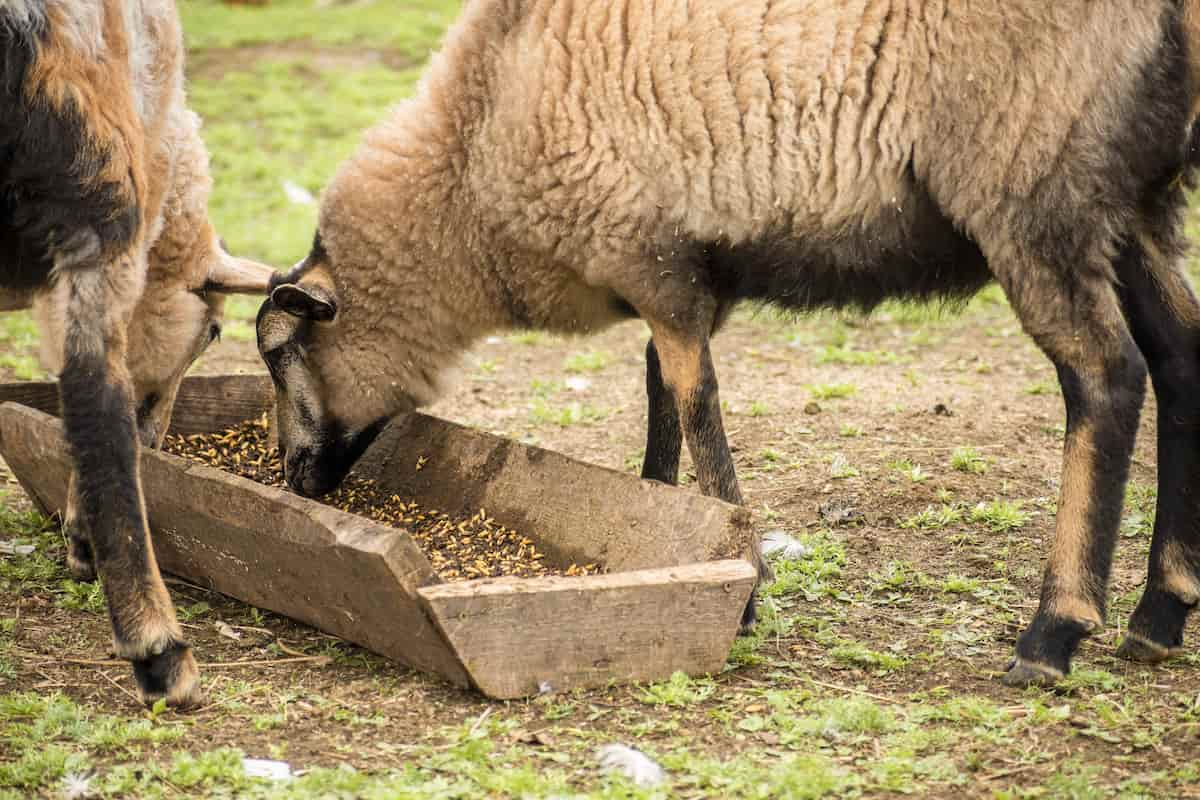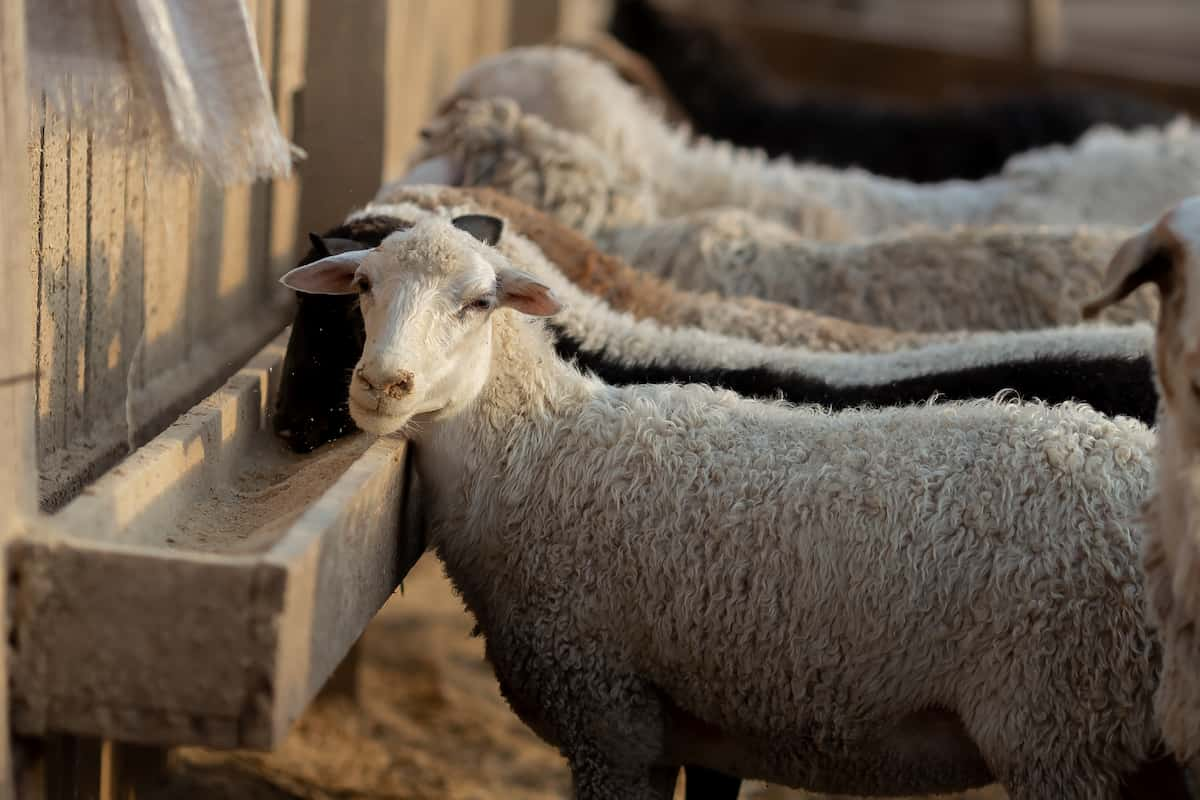Sheep farming is a rewarding and eco-friendly way to produce high-quality meat, wool, and even dairy products right in your backyard. Below we learn the essential steps for setting up a backyard sheep farm, covering everything from breed selection to infrastructure requirements. With the right preparation and care, you’ll be well on your way to successfully raising a flock of healthy, happy sheep.

Guide to Start Backyard Sheep Farming
Assess Your Goals and Resources
Before embarking on your sheep farming journey, assessing your goals, resources, and local regulations is crucial. Consider the size of your property, your budget, and the time you can devote to caring for your flock. Additionally, research local zoning ordinances and consult with neighbors to ensure you can raise sheep on your property.
Choose the Right Breed
Selecting the appropriate sheep breed is vital for the success of your backyard farm. Factors to consider include climate adaptability, temperament, growth rate, and the intended purpose of your sheep (meat, wool, or dairy). Some popular breeds for backyard farming include:
- Suffolk: Known for their excellent meat production and adaptability to various climates, Suffolk sheep are a popular choice for small farms.
- Merino: Renowned for their high-quality wool, Merino sheep are ideal for producing fine fibers.
- Dorper: A hardy, low-maintenance breed, Dorper sheep are suitable for meat production in warm climates.
- East Friesian: With exceptional milk yields, East Friesian sheep are a top pick for backyard dairy production.
Plan Your Infrastructure
A successful sheep farm requires proper infrastructure to ensure your flock’s safety, comfort, and productivity. Key elements to consider include:
- Fencing: Invest in strong, secure fencing to keep predators out and your sheep contained. Options include electric netting, woven wire, and wood panel fencing.
- Shelter: Provide a weatherproof shelter for your sheep, with adequate ventilation, space, and protection from the elements. This can be as simple as a three-sided lean-to or a more elaborate barn.
- Feed storage: Designate a dry, secure area for storing feed, hay, and other supplies to prevent spoilage and contamination.
- Water source: Ensure a reliable, clean water source is accessible for your flock at all times.
Acquire Necessary Equipment and Supplies
Before bringing your sheep home, gather essential equipment and supplies, such as:
- Feeders and waterers: Invest in durable, easy-to-clean feeders and waterers to prevent waste and maintain hygiene.
- Hay and feed: Research the nutritional requirements of your chosen breed and stock up on appropriate hay and supplemental feed.
- Handling equipment: Acquire basic sheep handling equipment, such as a halter, lead rope, and shepherd’s crook.
- Health care supplies: Prepare a basic first aid kit for your sheep, including wound disinfectant, bandages, and a thermometer.
Learn about Sheep Care and Management
- Nutrition: Learn about the dietary needs of your sheep breed and how to provide a balanced diet.
- Health: Familiarize yourself with common sheep health issues, symptoms to watch for, and preventative measures.
- Hoof care: Regular hoof trimming is essential to maintaining your sheep’s mobility and overall health. Learn how to perform this task or find a local professional to assist.
- Breeding and lambing: If you plan to breed your sheep, research breeding practices, gestation periods, and how to care for newborn lambs.
- Shearing: Wool-producing sheep require periodic shearing. Learn proper techniques and timing for shearing, or consider hiring a professional shearer.
In case you missed it: Katahdin Sheep Facts: Origin, Physical Characteristics, Size, Pros, and Cons

Develop a Flock Health Plan
Work with a veterinarian experienced in sheep care to develop a flock health plan tailored to your specific breed and location. This plan should cover:
- Vaccination schedules: Timely vaccinations are crucial for preventing diseases and maintaining the overall health of your flock.
- Parasite control: Develop a parasite management strategy, including rotational grazing, fecal testing, and deworming treatments.
- Routine health checks: Schedule regular health check-ups with your veterinarian to monitor the well-being of your sheep and address any concerns promptly.
Purchase and Transport Your Sheep
Once you’ve prepared your infrastructure, equipment, and supplies, it’s time to purchase your sheep. Research reputable breeders in your area or consider adopting from a rescue organization. When transporting your sheep, ensure they are secured safely in a well-ventilated trailer or livestock carrier.
Implement a Daily Care Routine
- Feeding: Provide fresh hay, water, and necessary supplements consistently daily.
- Observations: Monitor your sheep for signs of illness, injury, or stress, and address any issues promptly.
- Pasture management: Rotate pastures to maintain healthy forage and minimize parasite infestations.
- Cleaning: Regularly clean shelter areas, feeders, and waterers to maintain a hygienic environment.
Focus on Biosecurity
Biosecurity is essential for protecting your flock from infectious diseases. Implement the following practices to minimize the risk of illness:
- Quarantine new sheep: Keep newly acquired sheep separate from your existing flock for at least two weeks to monitor for signs of illness before introducing them.
- Limit visitors: Restrict access to your farm, especially from people who have had contact with other sheep or livestock.
- Maintain cleanliness: Regularly disinfect equipment, clothing, and footwear to prevent disease transmission.
- Report health concerns: Inform your veterinarian immediately if you suspect any signs of contagious diseases in your flock.
Establish a Record-Keeping System
- Identification: Record individual sheep identification information, such as tag numbers, markings, or microchip data.
- Health: Document vaccination and deworming schedules, diseases, treatments, and veterinary visits.
- Production: Track wool, meat, or dairy yields, as well as breeding and lambing data.
- Expenses: Maintain a record of all farm-related expenses to help manage your budget and track profitability.
In case you missed it: Icelandic Sheep Facts: Origin, Physical Characteristics, Size, Pros, and Cons

Conclusion
Starting a backyard sheep farm is a rewarding activity that requires careful planning, dedication, and ongoing education. By following this ultimate guide, you’ll be well-equipped to establish a thriving sheep farm that has provided high-quality meat, wool, or dairy products for years. Remember to continually assess your goals and adapt your management practices to ensure the long-term success of your backyard sheep farming venture.
- Feed Your Flock for Less: Top 10 Tips to Save on Chicken Feed
- Ultimate Guide to Ossabaw Island Hog: Breeding, Raising, Diet, and Care
- Hatching Answers: The Top 10 Reasons Your Chickens Aren’t Laying Eggs
- Eggs and Economics: Breaking Down the Cost of Raising Backyard Chickens
- Defend Your Greens: Proven Methods to Keep Iguanas Out of Your Garden
- Ultimate Guide to Cinnamon Queen Chicken: A Comprehensive Guide for Beginners
- Ultimate Guide to California Tan Chicken: Breeding, Raising, Diet, Egg-Production and Care
- Ultimate Guide to Marsh Daisy Chicken: Breeding, Raising, Diet, and Care
- 10 Types of Chicken Farming Businesses You Can Start for Profits